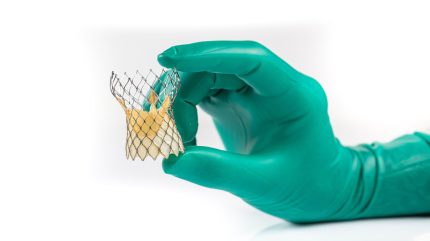A prothesis-patient mismatch (PPM) is when the TAVR system is physically mismatched with the shape or size of the interior of a patient’s artery. Credit: Shuttertstock / Mehmet Cetin Edwards Life Sciences, has announced positive results from its PARTNER trial examining its transcatheter aortic valve replacement (TAVR) system designed for patients with a smaller than usual annulus, the interior lining of a heart valve. A prothesis-patient mismatch (PPM) is when the TAVR system is physically mismatched with the shape or size of the interior of a patient’s artery, liable to result in poorer long-term outcomes or death, disabling stroke or heart failure-related hospitalization.
Edwards says that the five-year follow-up of more than 1,300 low and intermediate-risk SAPIEN 3 valve patients saw very positive outcomes low rates of reintervention and high survival rates within five years from the start of the study. Edwards additionally says that the PARTNER 3 trial demonstrated the highest reported survival rate in low-risk patients seen in any pivotal trial in the company’s history. Rebecca Hahn, investigator for the trial, said: “This important dataset highlights the risk of relying on a singular hemodynamic parameter such as mean gradient as a surrogate for valve dysfunction.

“When selecting the best treatment option, we must evaluate measures that matter to patients such as death, disabling stroke, quality of life and reintervention. This five-year follow-up of low and i.























